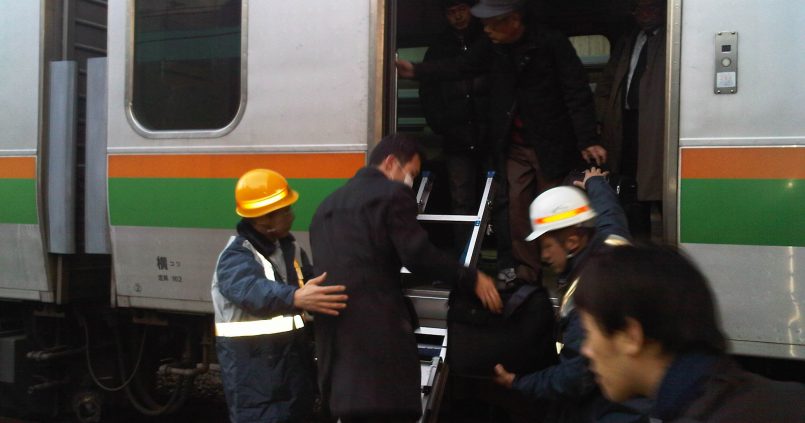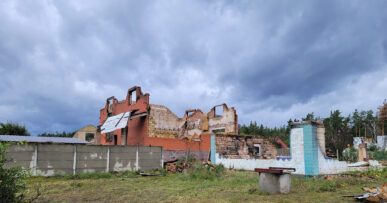- A Magnitude 8.9 Earthquake Rocks Tōhoku, Tsunami Devastates Sendai, State of Emergency Declared in Japan
- Reporting from Tokyo 3 Days After the Earthquake
- The Tōhoku Earthquake, Part 1: The Anatomy of Failure
- The Tōhoku Earthquake, Part 2: Fire and Water
- The Tōhoku Earthquake, Part 3: Fragile Civilization
TOKYO, Japan–I was in the train near Ikebukuro station when the train suddenly stopped with a loud creaking noise at 2:55 pm today. Japan’s state-of-the-art earthquake system at work…. That’s what I thought at first. But it has been a struggle since. It is 1:30 am now and we are still not far from where the train stopped. Japan Railway actually closed down the stations and sent out all commuters into the cold night. They announced that they are concerned about structural safety. Continuous aftershocks make me feel like I have car sickness as my family and I walk on the train tracks. I am concerned about the deep cough of my little daughter in the freezing night. I better find our way fast.
The following figures are being reported at the date of posting:
- Over 400 dead. Over 1,000 expected. Hundreds are reported missing.
- Huge 13-foot tsunami damage along the eastern seaboard. Large areas of inundation taking out structures.
- Fukushima Daiichi nuclear power plant shut down. 3 km zone was ordered to be evacuated.
- A large fire erupted at the Cosmo oil refinery in Ichihara city in Chiba prefecture near Tokyo and was burning out of control.
- In downtown Tokyo, a large building on fire and bellowing smoke in the Odaiba district of Tokyo.
- In central Tokyo, trains were stopped and passengers walked along the tracks to platforms.
- More than 4 million buildings without power in Tokyo and its suburbs.
- The ceiling in Kudan Kaikan, a large hall in Tokyo, collapsed, injuring an unknown number of people.
- The tsunami roared over embankments in Sendai city, washing cars, houses and farm equipment inland before reversing directions and carrying them out to sea. Flames shot from some of the houses, probably because of burst gas pipes.
- Tokyo’s main International airport, Narita was closed. Several thousand passengers are stranded.
- A large section of the ceiling at the 1-year-old airport at Ibaraki, about 50 miles (80 kilometers) northeast of Tokyo, fell to the floor.
- Dozens of fires were reported in northern prefectures of Fukushima, Sendai, Iwate and Ibaraki. Houses collapsing and landslides were also reported in Miyagi.



